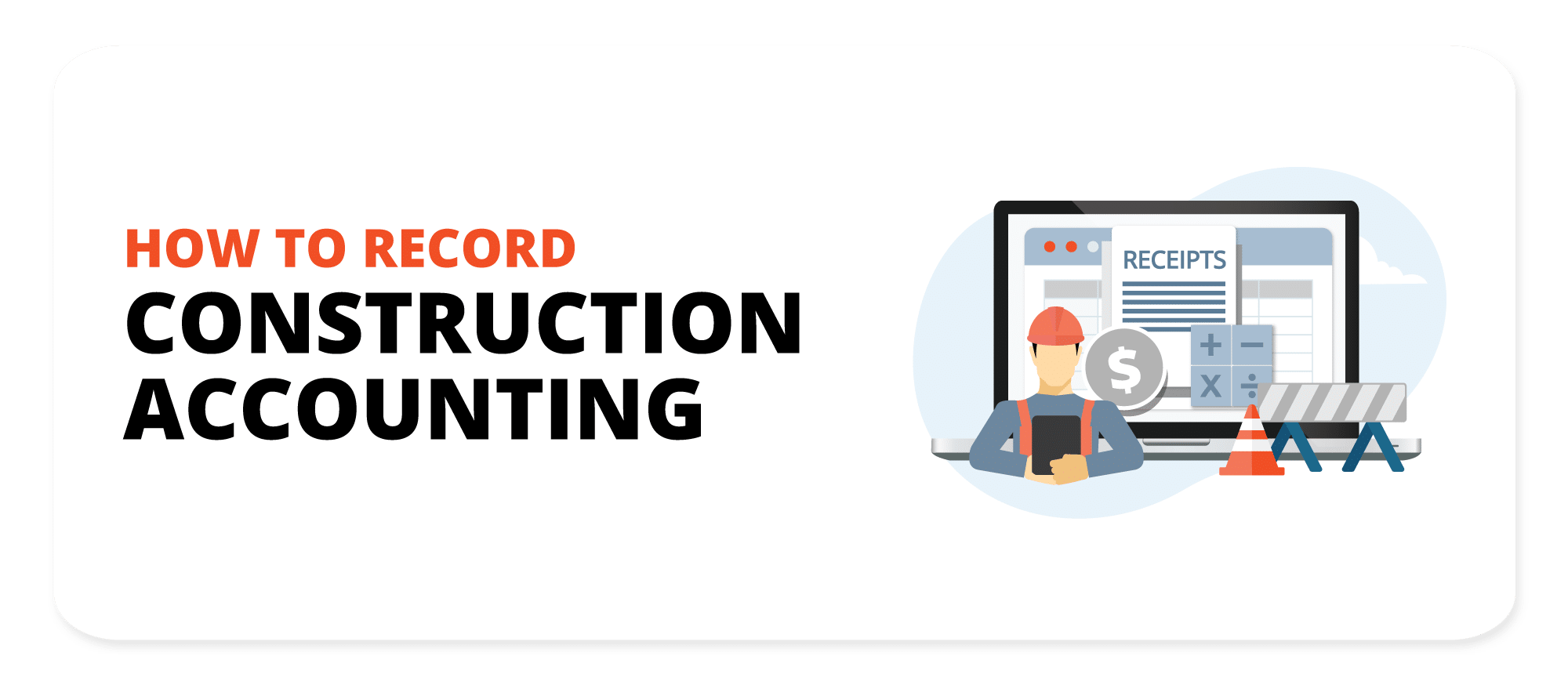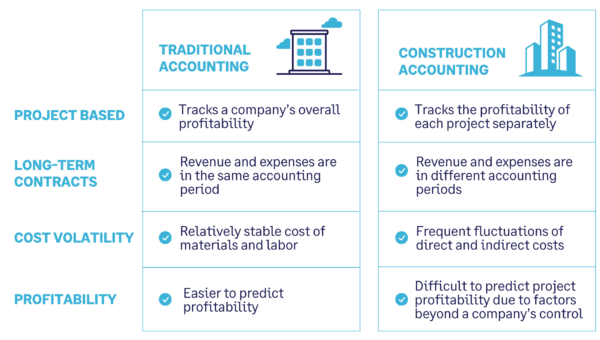How Construction Accounting Software Simplifies Financial Tracking
How Construction Accounting Software Simplifies Financial Tracking
Blog Article
A Comprehensive Overview to Building And Construction Accountancy: Maximize Your Financial Monitoring
Effective economic monitoring is crucial in the building sector, where the intricacies of project-based profits and expenditures can significantly impact overall success. By employing best techniques in monetary reporting and evaluation, stakeholders can not just boost functional efficiency however additionally alleviate possible risks.
Comprehending Building Audit
Recognizing building accounting is vital for the successful monitoring of economic sources in the construction sector. This specialized branch of bookkeeping addresses the distinct challenges dealt with by construction firms, consisting of project-based profits acknowledgment, expense monitoring, and compliance with regulative needs. Unlike standard accountancy, building and construction accounting requires an unique strategy to handle the complexities connected with long-lasting contracts and changing expenses.
Trick components of building audit include exact revenue recognition, which typically depends on the percentage-of-completion approach or completed-contract technique, depending upon the project's nature. This makes sure that economic declarations mirror real performance and profitability with time. Task costing plays a vital duty, permitting companies to track expenses linked with particular jobs, which helps in establishing earnings and resource allotment.
One more crucial facet is the administration of money circulation, which is commonly impacted by settlement routines and delays in receivables. Reliable capital management ensures that building and construction companies can meet functional requirements and purchase future jobs. Ultimately, understanding construction audit furnishes companies with the devices required to make educated economic decisions, minimize dangers, and improve general functional performance in a competitive sector.

Job Costing and Budgeting
Task setting you back and budgeting are essential components of building bookkeeping that enable firms to properly manage project funds and ensure profitability. Job costing includes the thorough monitoring of all expenses linked with a specific job, consisting of labor, materials, devices, and expenses. This procedure permits construction companies to ascertain the real cost of completing a task, assisting in informed decision-making and boosting monetary responsibility.
Budgeting, on the various other hand, acts as an economic roadmap for tasks. It entails setting monetary limits and assigning resources to numerous task elements, thereby developing a structure against which actual expenses can be determined. Reliable budgeting needs complete evaluation and forecasting, taking into factor to consider historic information, market trends, and potential dangers.
With each other, task setting you back and budgeting offer the needed devices for building firms to check financial efficiency, identify variances, and change methods as needed - construction accounting. By implementing robust work setting you back practices and sticking to well-structured budgets, companies can boost their operational performance, mitigate economic dangers, and ultimately improve their productivity in an affordable market. Hence, these techniques are crucial for sustaining long-lasting success within the building industry
Monitoring Expenses and Profits
Accurately tracking expenditures and income is important for building and construction companies to keep economic wellness and make sure project stability. Efficient monitoring allows businesses to monitor project performance, identify price overruns, and make informed have a peek at these guys economic choices. Executing a methodical approach to tape-recording all financial purchases is vital to achieving this objective.
Using construction accounting software program can considerably improve the tracking procedure. These devices help with real-time surveillance of costs, consisting of labor, products, and subcontractor expenses, while additionally recording revenue produced from project turning points and client repayments. By categorizing expenses and income streams, firms can get insights into profitability and cash circulation.

Financial Reporting and Analysis
Financial reporting and analysis play a crucial function in the building sector, giving stakeholders with important insights right into a firm's monetary performance and operational performance. Exact monetary reports, consisting of annual report, income declarations, and money flow statements, are fundamental for assessing the wellness of a construction organization. These papers assist determine patterns, review project earnings, and facilitate notified decision-making.
In building accounting, economic evaluation exceeds plain reporting; it entails looking at financial data to reveal underlying patterns and anomalies. Key efficiency signs (KPIs), such as gross profit margins, project completion rates, and return on financial investment, useful content serve as benchmarks to determine functional success. Consistently examining these metrics allows companies to determine areas requiring enhancement, enhance resource allotment, and enhance task monitoring strategies.
Moreover, effective monetary reporting cultivates openness and constructs trust fund with stakeholders, consisting of clients, vendors, and investors - construction accounting. By preserving strenuous financial oversight, building and construction business can mitigate risks, make certain conformity with regulative needs, and inevitably drive lasting growth. Thus, a robust economic coverage and evaluation framework is vital for browsing the complexities of the building landscape and achieving long-lasting success
Ideal Practices for Success
To accomplish success in building and construction audit, firms should take on a set of best methods that simplify operations and boost financial administration. Initially, carrying out a robust task monitoring software tailored for building can promote real-time monitoring of task expenses and spending plans, enabling more precise projecting and source appropriation.
Second, embracing a consistent method to work setting you back is critical. This involves thoroughly tracking all prices connected with each project, including labor, products, and overheads. Consistently assessing task prices against preliminary estimates assists recognize variances early, allowing prompt corrective actions.
Third, keeping strenuous documentation practices makes sure compliance with policies and simplifies audits. This consists of keeping detailed records of contracts, modification orders, invoices, and invoices.
In addition, purchasing personnel training is crucial. Ensuring that employees are fluent in accounting principles, software use, and sector criteria can substantially enhance performance and accuracy in economic coverage.
Conclusion

Report this page